#Bert Roach
Explore tagged Tumblr posts
Text

#polls#movies#the crowd#the crowd 1928#the crowd movie#20s movies#old hollywood#king vidor#eleanor boardman#james murray#bert roach#estelle clark#daniel g. tomlinson#have you seen this movie poll
31 notes
·
View notes
Text

Film Fun - March 1930 Charlotte Green Wood, Sister G, and Bert Roach
#1930s#1910s#1920s#1920s hollywood#silenst film#silent comedy#silent cinema#silent era#silent movies#pre code#pre code hollywood#pre code film#pre code era#pre code movies#vintage hollywood#black and white#old hollywood#slapstick#sisters g#bert roach#charlotte greenwood
9 notes
·
View notes
Text

Murders in the Rue Morgue (1932)
For the bookworms reading this, fair warning: there have been almost no faithful film adaptations of an Edgar Allan Poe work. In the absence of any cinematic-literary faithfulness to Poe’s bibliography, there still remains a plethora of big-screen Poe adaptations that, from a cinematic standpoint, are simply mesmeric to watch. Robert Florey’s Murders in the Rue Morgue, starring Béla Lugosi one year after his career-defining role in Dracula (1931) and released by Universal, is one of the earliest such adaptations. Its atmospheric filmmaking reminiscent of the tangled geometries of German Expressionism and Lugosi’s creepy turn in a starring role may make Poe loyalists furious, but one hopes they can also see the remarkable craft of this film, too.
Though lesser known than both Dracula and Frankenstein (1931), Florey’s Murders in the Rue Morgue came about due to legacies of both those productions. Following the successful release of Dracula in February 1931, Universal considered Lugosi as their go-to star for horror films. Producer Carl Laemmle Jr. – the son of Universal’s chief executive and co-founder, Carl Laemmle – wanted Lugosi to play Frankenstein’s monster (often mistakenly called “Frankenstein”), and even had Lugosi play the monster in several minutes of test footage. That footage, now lost, is one of horror cinema’s greatest sights unseen. Sometime after that test shoot, Universal gave director James Whale a first-choice pick for his next project after the rousing critical and commercial success of Waterloo Bridge (1931). Whale chose Frankenstein, requested a screenplay rewrite, and cast the British actor Boris Karloff in the role. As consolation, Lammle Jr. gave the Hungarian American Lugosi the starring role in Murders in Rue Morgue.
In a Parisian carnival in 1845, we find ourselves in a sideshow tent. There, Dr. Mirakle (Lugosi; meer-AH-cull, not to be pronounced like “miracle”) provides a presentation that is anything but the freak show the attendees are anticipating. He unveils an ape, Erik (Charles Gemora – an actor in an ape suit; some close-up shots are of an actual ape), whom he claims he is able to understand and converse with – even though Erik is unable to speak any human language. In the audience, Mirakle spots a young lady, Camille L’Espanaye (Sidney Fox), and asks her to be his intrepid volunteer for a demonstration. The demonstration goes awry, to the ire of both Camille and her fiancé, Pierre Dupin (Leon Ames). As Camille and Pierre exit the carnival, Mirakle orders his assistant, Janos (Noble Johnson), to trail them. Thus sets in motion the film’s grisly plot.
The film also stars silent film comic actor Bert Roach as one of Camille and Pierre’s friends, Betsy Ross Clarke as Camille’s mother, character actor D’Arcy Corrigan as the morgue keeper, and Arlene Francis (best known as a regular panelist on the game show What’s My Line?) as a prostitute.
Murders in the Rue Morgue, with a screenplay by Tom Reed (1925’s The Phantom of the Opera, 1931’s Waterloo Bridge) and Dale Van Every (1937’s Captains Courageous, 1942’s The Talk of the Town), is one of the most violent pre-Code horror films from the early synchronized sound years. It was so violent, in fact, that Universal’s executives harbored trepidation throughout its entire production and demanded narrative and structural changes that ultimately harmed the film (including cutting grotesque and violent sequences, leaving behind the current 62-minute runtime). The best example of this damage comes from the film’s opening third. Unbeknownst to the carnival attendees, Mirakle has been performing horrifying experiments involving cross-species blood mixing and, through heavy implication by the filmmaking and Gemora’s performance, bestiality (hey, it’s a pre-Code movie!). Originally, Florey’s adaptation of Murders in the Rue Morgue began with Mirakle and Janos abducting Arlene Francis’ streetwalker and Mirakle’s torturing and experimentation on her. Only after that did the film transition to Mirakle’s sideshow presentation.
The reordering of these two scenes – in the final print, the sideshow opens the movie and the abduction and experimentation follows a turgid romantic scene between Camille and Pierre – makes the sideshow opening seem sillier than it should be. If the original order had been kept, Florey’s initial intention to instill dread during the sideshow only after the abduction and experimentation scene – as the audience would be well aware of what Mirakle is capable of – would have made the film’s exposition feel far less stage-bound and hokey than it does. The abduction and experimentation scene’s blood-curdling horror remains (the scene contains a boundary-pushing combination of bestial and religious allusions that some modern filmmakers might not even dare to push), but the romantic scene immediately preceding makes for a rough tonal transition. In comparison to later horror films from the Hollywood Studio System released after stricter implementation of the Hays Code in 1934, these scenes – in addition to a later investigation and the film’s finale – hold up wonderfully.
Crucially, Tom Reed and Dale Van Every’s screenplay alter genres from Edgar Allan Poe’s original short story. With the introduction of hobbyist detective C. Auguste Dupin, Poe’s The Murders in the Rue Morgue is a foundational piece of early Western detective fiction. Or, in Poe’s words, Murders in the Rue Morgue is a “ratiocination tale” – a name that was never going to catch on in any century. Poe’s Dupin, a character who later influenced Sir Arthur Conan Doyle’s Sherlock Holmes and Agatha Christie’s Hercule Poirot, undergoes a name change in Reed and Van Every’s adaptation, and we do not see nearly as much deduction and investigating here as in the short story. Reed and Van Every’s screenplay, which delete all but two scenes from the Poe short story, also elevate one of their own creations – Dr. Mirakle – at the expense of Dupin. In addition, it is clear early on who is responsible for the violent acts within the narrative. And, unlike the Poe’s original short story in which Dupin and the unnamed narrator read about the violence in the newspaper, the film shows these acts explicitly or the lead-up to them. Director Robert Florey’s film is decidedly a horror film, not a mystery.
Having Béla Lugosi in the cast in his first film after Dracula is a surefire way to confirm that you are making/watching a horror film. Reed and Van Every’s clunky dialogue might not do Sidney Fox and Leon Ames any favors, but it is a gift for Lugosi. Lugosi’s heavily accented English typecast him later in his career to mad scientist and vampire roles. Nevertheless, who else could stand there – with a mangled tuft of a wig, a makeup department-applied thick unibrow that appears to barely move, menacing lighting from a low angle – and tell Fox’s Camille (after receiving a gawking from Erik, the ape), “Erik is only human, mademoiselle. He has an eye for beauty,” with incredible conviction? The opening minutes of the film at the sideshow, because of the reordering of the film, are heavily expository and contain the bumpiest writing of the entire film. But Lugosi, with his signature cadence (notice how and when Lugosi uses silence and varies the speed of his phrasing – very few native English speakers naturally speak like that) and his physical acting, presents himself perfectly as the societal outsider – remarkably intelligent, but perhaps mentally unhinged. Lugosi’s performance completely outshines all others in this film. Here, in a magnificent performance, he confirms that his acting ability on display in Dracula was no fluke.
Early Universal Horror of the late silent era and early sound era owes a sizable debt to German Expressionism – a mostly silent film-era movement in German cinema in which filmmakers used distorted and geometrically unrealistic sets to suggest mental tumult and dread. Working alongside editor Milton Carruth (1932’s The Mummy,1943’s Shadow of a Doubt) and production designer Charles D. Hall (1925’s The Phantom of the Opera, 1930’s All Quiet on the Western Front), cinematographer Karl Freund (1924’s The Last Laugh, 1927’s Metropolis) found a team of filmmakers that he could work with to set an aesthetic that could do justice to Murders in the Rue Morgue’s macabre plot.
It also helped that director Robert Florey wanted to make something that looked closer to Robert Wiene’s The Cabinet of Dr. Caligari (1919, Germany) than Dracula. Together, Freund and Florey worked with Hall to achieve a set design that created long shadows and crooked buildings and tents more likely to appear in a nightmare than in nineteenth century Europe. The final chase scene across angular and rickety rooftops used leftover sets from The Hunchback of Notre Dame (1923). All this endows Murders in the Rue Morgue with a gruesome atmosphere, oftentimes cloaked in dust and early morning mist.
For Freund and Florey, each saw in the other a kindred spirit in their appreciation of German Expressionism. If they could not achieve just the right shadow, they would instead paint it onto the set itself (painting shadows was commonplace in German Expressionism, but never in Hollywood movies). To achieve the ideal lighting for some of the rooftop or near-rooftop scenes, they shot outdoors, in chilly autumn weather, past midnight – most black-and-white Old Hollywood films, due to technical limitations at the time, shot nighttime scenes inside soundstages. In an era where cameras usually stayed frozen in one place, Freund invented the unchained camera technique, allowing cameras to creep forward into a set rather than relying on a cut to a close-up. Though the unchained camera is not as present here as in other movies involving Freund as cinematographer, it makes the viewer feel as if they are moving alongside the crowd at the carnival, as well as imbuing the audience with a terrible anticipation for what terror lurks around the corner. Freund and Florey’s collaboration was one of like-minded men, with similar influences and goals. In what was their only film together, the two achieve an artistry with few similarities across much of American film history.
Initial reception to Murders in the Rue Morgue was cold, in large part due to the film’s shocking violence and awkward acting. Despite finishing the film under budget, Robert Florey hit the apex of his career with Murders in the Rue Morgue. The disapproval from Universal executives took its toll, and given that Florey was on a one-film contract with the studio, he never returned. The French American director would bounce around studios over the next decade – from Paramount to Warner Bros. back to Paramount to Columbia and back to Warner Bros. – mostly working on inexpensive B-pictures, occasionally making a hit such as The Beast with Five Fingers (1946). Florey spent his later career with television anthologies: Alfred Hitchcock Presents, Four Star Playhouse, and The Twilight Zone.
For Lugosi, Murders in the Rue Morgue was the true first step for the horror film typecasting that he sought to avoid. Once considered by Universal’s executives to be the successor to the late Lon Chaney (The Man of a Thousand Faces passed away in 1930), the failure of Murders in the Rue Morgue among audiences and critics gave Universal pause when it came to extending Lugosi’s original contract. But the early 1930s were Lugosi’s most productive period in films, and they contained his finest, most memorable performances.
In recent decades, the reputation of Murders in the Rue Morgue continues to gradually improve, as do many films that once caused a stir due to their content during the pre-Code years. Awkward supporting actors aside, when one has Béla Lugosi cloaked in the shadows of German Expressionism and the spirit (albeit not so much intentions of the original text) of Edgar Allan Poe, what results is a foreboding work, one worthy to carry Universal’s horror legacy.
My rating: 7/10
^ Based on my personal imdb rating. My interpretation of that ratings system can be found in the “Ratings system” page on my blog. Half-points are always rounded down.
For more of my reviews tagged “My Movie Odyssey”, check out the tag of the same name on my blog.
#Murders in the Rue Morgue#Robert Florey#Bela Lugosi#Sidney Fox#Leon Ames#Bert Roach#Brandon Hurst#Noble Johnson#D'Arcy Corrigan#Betsy Ross Clarke#Arlene Francis#Tom Reed#Dale Van Every#Karl Freund#Milton Carruth#Charles D. Hall#Carl Laemmle Jr.#Edgar Allan Poe#TCM#My Movie Odyssey
2 notes
·
View notes
Text
The Man in the Iron Mask (1939)
#1939#Alan Hale#Albert Dekker#Alexandre Dumas#Bert Roach#Dorothy Vaughan#Joan Bennett#Joseph Schildkraut#Louis Hayward#Marion Martin#Miles Mander#Montagu Love#Nigel De Brulier#Reginald Barlow#Warren William
2 notes
·
View notes
Text

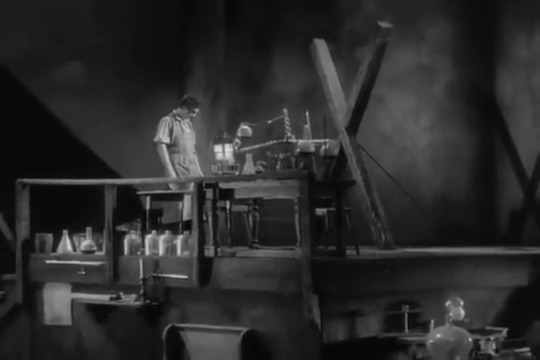
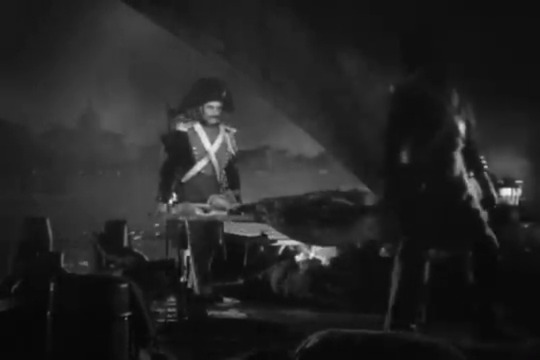
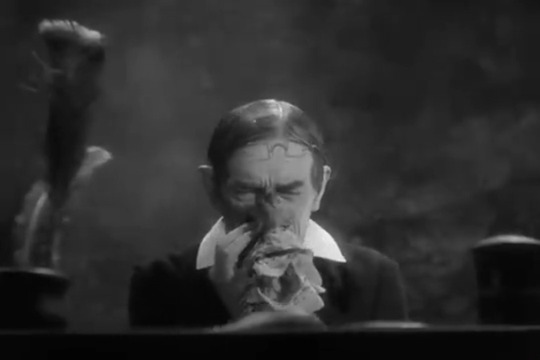
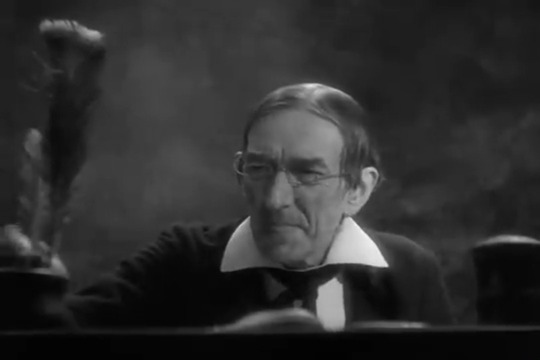
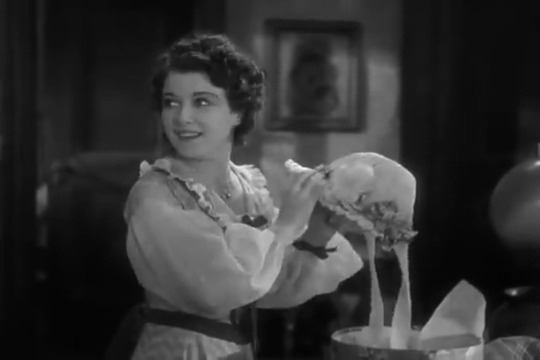
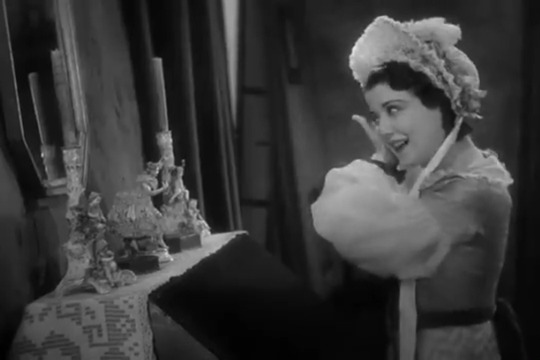
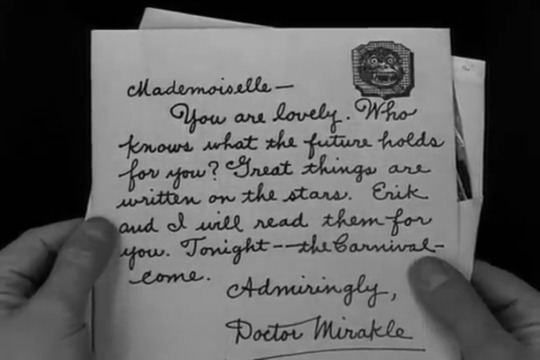
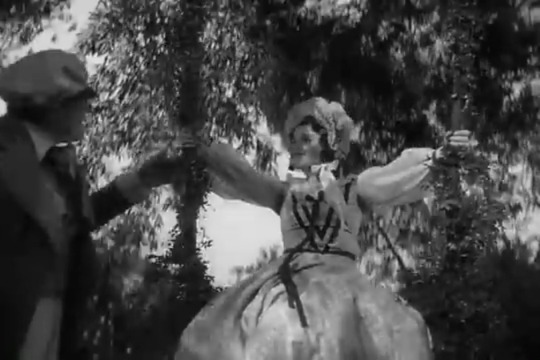
murders in the rue morgue, robert foley 1932
#murders in the rue morgue#robert foley#edgar allan poe#1932#sidney fox#bela lugosi#bert roach#frankenstein#king kong#tarzan#leif erikson#erik thorvaldsson#erik the red#erik the viking#david lynch#the elephant man
3 notes
·
View notes
Text

#Bird of Paradise#Dolores del Río#Joel McCrea#John Halliday#Richard “Skeets” Gallagher#Bert Roach#Lon Chaney Jr.#Wade Boteler#Reginald Simpson#King Vidor#1932
6 notes
·
View notes
Text
So Long Letty, directed by Lloyd Bacon. Performances by Patsy Ruth Miller, Grant Withers, Charlotte Greenwood and Bert Roach. Warner Bros. 1929.
So Long Letty [DVD]. (2010). Atlanta, GA: Turner Entertainment Co.
2 notes
·
View notes
Text
Oftentimes when I see people talking about how to get into silent films, they list things like science fiction, horror, and comedy shorts as the most accessible. When I began exploring silent films in high school, I tried this. I watched a handful of films by Méliès, as well as some of Chaplin’s and Keaton’s shorts. My first feature length silent film was Nosferatu (1922), chosen only for its connection to SpongeBob. I didn’t connect with any of these films. My attention span wasn’t strong enough for the pacing, I felt too far removed from the style of acting, etc.
What I did manage to successfully watch a lot of were animated silent shorts. I viewed an ungodly amount of Felix the Cat, and Alice Comedies films, but my favorite series was Out of The Inkwell (later called Inkwell Imps.) This series was made by Max and Dave Fleischer and starred Koko the Clown. The series made frequent use of rotoscope, and later integrated live-action backgrounds and footage with the animation.
For awhile I believed I was doomed to never enjoy (live-action) silent films. The pictures I was told would be accessible just weren’t. And then I started watching the Library of Congress’ National Film Registry. One of the first silent films inducted in 1989 was King Vidor’s The Crowd (1928). I dreaded watching it. The synopsis seemed boring; it was about the life of an average joe. Would it be able to hold my attention for its (admittedly short) runtime?
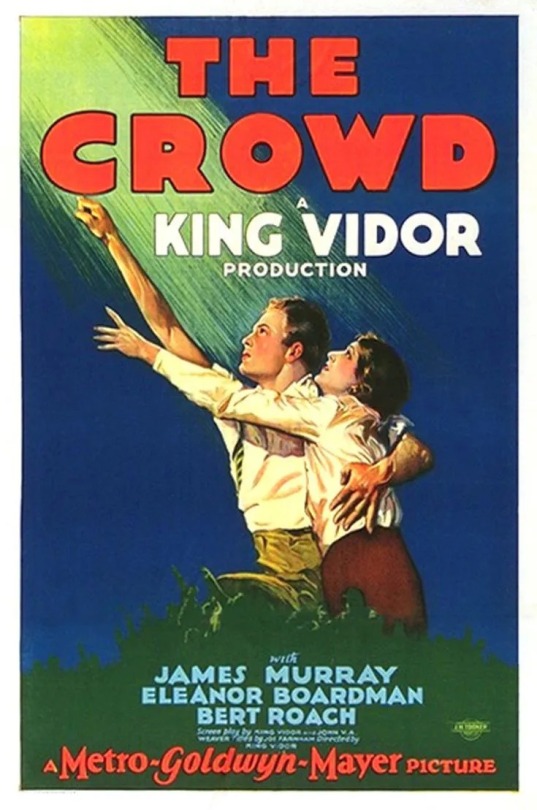
The answer is yes. 100% yes.
While I didn’t immediately fall in love with it (the first silent film to hold that title would be Metropolis (1927), it moved me in a way films I had seen before didn’t. The rhythm of Vidor’s editing feels almost poetic. And as someone who was (unfortunately) raised on Marvel, I didn’t realize that films could have such an emotional impact at the time.
The Crowd is an extraordinary film about ordinary people. It expanded my view on movies and opened my eyes to the concept of cinema, and gave me the confidence to keep appreciating silent movies.
The moral of the story? Keep challenging yourself with what you watch! Don’t take other’s words on accessibility as gospel. You might just find your new favorite flick…
Unfortunately The Crowd doesn’t fall into the US Public Domain for another three and a half months. I’ll update this post with a link to the full film when it does.
2 notes
·
View notes
Text
@nikandrros

Pictures like this were everywhere back in my day but now theyre all gone
73K notes
·
View notes
Text
Papa Roach Announces ‘Rise Of The Roach’ North American Tour With Rise Against And Special Guest Underoath
Papa Roach Announces ‘Rise Of The Roach’ North American Tour With Rise Against And Special Guest Underoath. #paparoach @paparoach #riseagainst @riseagainst #underoath @UnderoathBand
Papa Roach announces they will join forces with Rise Against and special guest Underoath to embark on the first North American legs of the Rise of the Roach Tour in the spring and fall of 2025, marking a significant milestone as the two legendary rock bands unite for their first-ever outing together. In the tour announcement parody video, comedian Bert Kreischer dropped the ‘big news’ that he’ll…
#Bert Kreischer#Jacoby Shaddix#Papa Roach#Rise Against#Rise Of The Roach#Rise of the Roach Tour#Tim McIlrath#Underoath
0 notes
Text

Ramon Novarro in 𝑨 𝑪𝒆𝒓𝒕𝒂𝒊𝒏 𝒀𝒐𝒖𝒏𝒈 𝑴𝒂𝒏, a 1928 comedy film directed by Hobart Henley. The film stars Ramon Novarro, Marceline Day, Renée Adorée, Carmel Myers and Bert Roach. The film is considered lost.
88 notes
·
View notes
Text
Dread by the Decade: Murders in the Rue Morgue
👻 You can support me on Ko-Fi! ❤️

★★½
Plot: A scientist obsessed with evolution abducts young women to inject them with ape blood.
Review: A solid Lugosi and great costumes and sets struggle against the weight of a bizarre plot and flat characters.

Source Material: "Murders in the Rue Morgue" by Edgar Allan Poe Year: 1932 Genre: Psychological Horror Country: United States Language: English Runtime: 1 hour 1 minute

Director: Robert Florey Writers: Tom Reed, Dale Van Every Cinematographer: Karl Freund Editor: Milton Carruth Cast: Sidney Fox, Bela Lugosi, Leon Ames, Bert Roach, Brandon Hurst, Noble Johnson

-----
Story: 2/5 - Why one of the earliest detective stories was adapted into a mad scientist tale is beyond me. The characters are mostly flat, with all of the women being doe-eyed and infantile.
Performances: 3/5 - Lugosi stands out, especially during his intro scene.
Cinematography: 4/5 - Some really excellent framing, shadow use, and camera movement.

Editing: 2.5/5 - Occasionally confusing.
Effects: 3/5 - The gorilla suit is fairly solid, all things considered.
Sets: 4.5/5 - Great. The carnival, street, and laboratory sets are especially of note.
Costumes, Hair, & Make-Up: 4/5
youtube
Trigger Warnings:
Mild violence
Anti-Arab racism (uncritical)
Anti-indigenous racism (uncritical)
Misogynistic caricatures
#Murders in the Rue Morgue (1932)#Murders in the Rue Morgue#Robert Florey#American#psychological horror#Dread by the Decade#review#1930s#★★½
12 notes
·
View notes
Text
gerbert fics masterpost
—> specifically my own works from @/returntothevoid on AO3
your hot whiskey eyes (have fanned the flame)
rated E; 614 words
“You’re a fucking rat,” Gerard says with a grin. He climbs back into bed beside Bert, stealing a drag of his cigarette before laying down and closing his eyes. “I like you a lot.”
“Me or my dick?” He’s kidding, but somewhere deep down he does genuinely want to know.
sound effects and overdramatics
rated M; 1 039 words
It’s just fucking.
That’s what Gerard tells himself, at least. It’s generally difficult to think about anything other than sex when you’re high as a kite, caked in post-show sweat and being pinned to a brick wall by a guy just as far gone and desperate as you.
sleeping with roaches
rated E; 477 words
He’s happy here, he realizes. Buzzed and on the edge of consciousness, making someone that makes him feel safe feel so good.
All he knows is that he’s so, so tired. And happy. Gerard Way is happy.
sloppy kisses, dirty wishes (baby this is living)
rated E; 564 words
“You’re so fucking beautiful,” Bert spits before ducking his face into Gerard’s neck. He bites his jugular and Gerard whines. He smells like sweat and weed and sex.
lunacy fringe
rated E; 2 025 words
Gerard watches and Bert notices his eyes go lidded as the smoke settles in his lungs. He leans forward, eyes flitting down to Gerard’s lips before he slides a hand to grip the back of Gerard’s skull and pulls him in to seal his mouth over his. Gerard moans and melts into it. It’s lazy and slow, out of character for both of them. Gerard thinks he might like it.
“I don’t think I’d mind hurting you,” Bert starts, breathing heavily and holding Gerard’s stare. “Only if it’s what you want, though, and that you’re 1000% sure it’s what you want.”
blue
rated E; 380 words
It’s times like these where he pretends he doesn’t exist—believes he’s nothing but something for Gerard to play with, something for him to satisfy. Something to be satisfied. It’s hard to think of much else when Gerard’s doing exactly as he promised.
old bones
rated M; 425 words
His lips are chapped and dry despite the sweat and Gerard laps at the taste.
tell me i’m an angel
rated E; 3 048 words
He gawks at the way Bert’s inky black hair clings to his neck like spiderwebs, the darkness of his tattoos accentuated against his honey-coloured skin when they’re wet, the curve of his arms, all lean muscle, and the broad shoulders he’d suddenly like to grab.
waste some time with you
rated E; 1 332 words
It’s become routine at this point. Gerard’s had a rough day, Bert fucks him until he passes out. What can really be considered a “rough day” at this point in his life is beyond him. Everything bleeds together—hours, drinks, shows, sex. What he considers a relatively okay 3pm-to-4am period (or whatever constitutes a day for a rock star with an increasingly concerning drug addiction) is one that he can barely remember once he wakes up. He wakes up next to Bert a lot, and he’s okay with that for now. They chase their hangovers away together and Bert likes to blow him awake sometimes. He likes being around him, and that says a lot because Gerard doesn’t really like being around a lot of people.
Oh, and he gives the best head Gerard’s ever had in his life.
#my chemical romance#the used#bert mccracken#gerard way#gerbert#ao3#band fic#smut#emo#2000s#my chemical gender crisis#writerscommunity
13 notes
·
View notes
Text
I told roach that I would like to say that we're bert and Ernie but really they embody Bert and Ernie in one person very well
2 notes
·
View notes
Text
Berquinn Snippet
This fic feels like it's taking forever to finish, so I figured I'd give you all a little sneak peek of it
They were barely in their twenties the first time it happened. Bert figured he would remember that night until the day he died. It had been pretty good, they’d pulled together enough money to get a shitty motel room and dinner that night. Roaches crawled over every surface and Bert could hear a couple fighting three doors down from their room all night, but at least they had a roof over their heads. Rain drilled against the windows and the drawn curtains blocked out every amount of light. Branden and Jepha were curled up asleep in one of the beds, their breathing even and no movement coming from their side of the room. Quinn rested in bed with Bert because it seemed the most natural.
But Bert hadn’t fallen asleep, eyes wide open as he stared at the ceiling and his mind running wild with thoughts of absolutely nothing. He’d been confused when Quinn moved over top of him, his bare skin warm and his breath reeking of the shitty beer they’d all had earlier. His hips fell open awkwardly to let Quinn settle onto him, pressing way too close. Bert didn’t shove him away, though. He simply looked up at Quinn through the darkness, body thrumming hard and definitely not sober enough to be able to keep up with what was going on. His pupils were blown wide and his body didn’t even feel like his own as Quinn leaned down to press a small kiss to his cheek a bit nervously.
#berquinn#rpf#bandom rpf#rpf safe#pro rpf#bert x quinn#quinn x bert#bert mccracken x quinn allman#quinn allman x bert mccracken#the used#the used rpf#bandom#quinn allman#bert mccracken
7 notes
·
View notes
Text


CALIFICACIÓN PERSONAL: 6 / 10
Título Original: Murders in the Rue Morgue
Año: 1932
Duración: 61 min.
País: Estados Unidos
Director: Robert Florey
Guion: John Huston, Tom Reed, Dale Van Every, Robert Florey. Relato: Edgar Allan Poe
Música: Heinz Roemheld
Fotografía: Karl Freund (B&W)
Reparto: Bela Lugosi, Sidney Fox, Leon Ames, Bert Roach, etc
Productora: Universal Pictures
Género: Crime; Horror; Mystery
TRAILER:
youtube
0 notes